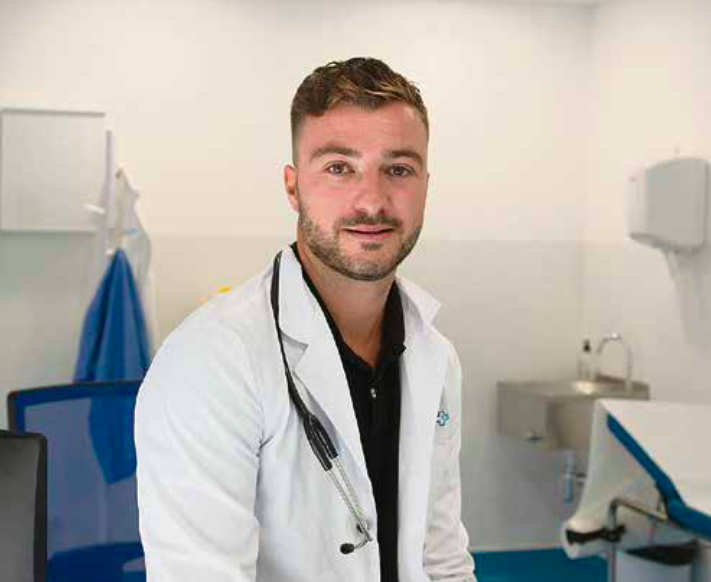

LEBEL

Ask a doctor about a prescription for LEBEL

How to use LEBEL
INSTRUCTIONS for medical use of the medicinal product BELOSALIC (BELOSALIC®)
Composition
Active substances: betamethasone, salicylic acid; 1 g of ointment contains 0.5 mg of betamethasone in the form of dipropionate, 30 mg of salicylic acid; excipients: mineral oil, soft white paraffin.
Pharmaceutical form
Ointment.
Main physical and chemical properties
Semi-transparent homogeneous ointment of white color.
Pharmacotherapeutic group
Corticosteroids for dermatological use. Corticosteroids in combination with other drugs. ATC code D07X C01.
Pharmacological properties
Pharmacodynamics
Betamethasone dipropionate is a synthetic fluorinated corticosteroid that has anti-inflammatory, antipruritic, and vasoconstrictive effects. When applied locally, salicylic acid has a keratolytic effect.
Pharmacokinetics
Absorption of betamethasone dipropionate by the body is possible mainly after prolonged treatment on a large skin surface.
Clinical characteristics
Indications
For local treatment of dermatoses sensitive to corticosteroids, such as chronic, erythematous, or hyperkeratotic psoriasis, and other dermatoses of an erythematous-squamous nature, such as seborrheic dermatitis (eczema), dry eczema in the desquamative phase, lichenification.
Contraindications
Increased sensitivity to betamethasone, salicylic acid, or any of the excipients of the drug. Also, rosacea, acne, widespread psoriatic plaques, perianal and genital itching, diaper dermatitis, perioral dermatitis, rosacea, skin manifestations of syphilis, skin tuberculosis, other bacterial and fungal skin infections without proper antibacterial and antifungal therapy, contagious molluscum, dermatomycoses, skin reactions after vaccination, varicose vein dilation, viral infections (e.g., simple herpes, shingles, chickenpox). The drug should not be applied under occlusive dressings.
Interaction with other medicinal products and other types of interactions
There are no known cases of interaction with other medicinal products.
Local application of salicylic acid should not be combined with oral administration of drugs containing acetylsalicylic acid and other non-steroidal anti-inflammatory drugs. Do not use with benzoyl peroxide and local retinoids.
Salicylic acid can increase the permeability of the skin to other topical drugs and thereby increase their absorption into the body. Additionally, salicylic acid can enhance the unwanted effect of methotrexate and the hypoglycemic effect of oral antidiabetic drugs of the sulfonylurea group.
In case of use of any other medicinal products, it is necessary to inform the doctor about it.
Special warnings and precautions for use
The drug is not intended for use in ophthalmology. It is necessary to avoid getting the drug into the eyes, on mucous membranes, wound surfaces, and ulcers.
When applying to the skin of the face, the duration of the treatment course should be limited to 5 days.
If skin irritation or increased sensitivity occurs during the use of the drug, treatment should be discontinued. In case of infection, appropriate therapy should be prescribed.
When the crust or hyperkeratosis disappears, treatment should be continued only with corticosteroids.
Any side effects that occur with the use of systemic corticosteroids, including suppression of adrenal cortex function, may also occur with local use of glucocorticosteroids, especially in children.
Systemic absorption of glucocorticosteroids or salicylic acid during local use will be higher if treatment is carried out on large areas of the body or with the use of occlusive dressings. It is necessary to take appropriate precautions in such cases, especially when treating children.
It is necessary to avoid long-term therapy with the drug in all patients, regardless of age.
If excessive dryness or increased skin irritation occurs, the use of the drug should be discontinued.
Adrenal function usually recovers after withdrawal of the drug. In some cases, withdrawal symptoms may develop, which require the addition of systemic corticosteroids.
When the crust or hyperkeratosis disappears, treatment should be continued only with corticosteroids.
The drug is not recommended to be applied under occlusive dressings.
In case of infection, antifungal or antibacterial agents should be prescribed accordingly. If the desired effect does not occur quickly, the use of corticosteroids should be discontinued until the signs of infection are eliminated.
It is necessary to take appropriate precautions to prevent an increase in the absorption area when using the drug on damaged areas, atrophied skin, large areas of the body surface, under occlusive dressings, or in children (due to a higher ratio of "body surface area/body weight"). When using on large areas of the body surface, it is also necessary to consider the absorption of salicylic acid.
Visual impairment
When using corticosteroids for systemic and local action (including intranasal, inhalation, and intraocular use), visual disturbances are possible. If symptoms such as blurred vision or other visual disturbances occur, the patient should undergo an examination by an ophthalmologist to assess possible causes of visual disturbances, which may include cataracts, glaucoma, or such rare diseases as central serous chorioretinopathy, which have been reported after the use of systemic and local corticosteroids.
Corticosteroids for external use
Corticosteroids for external use can cause psoriasis for some reasons, including the restoration of symptoms with subsequent development of tolerance, the risk of developing pustular psoriasis, and local systemic toxicity due to a decrease in the protective function of the skin. Patients with liver function disorders are most sensitive to systemic effects. Careful monitoring of the patient is necessary.
Local corticosteroids can distort the clinical picture.
A relapse is possible when treatment is discontinued. An exacerbation of the infection may occur, as well as a slowing down of the healing process.
The drug should not be applied to mucous membranes or areas around the eyes due to the keratolytic effect of salicylic acid.
It is contraindicated to apply the drug to areas with atrophied skin.
Use during pregnancy or breastfeeding
Pregnancy
Since the safety of using local corticosteroids during pregnancy has not been established, the drug should not be used during the first trimester of pregnancy. The use of corticosteroids in later terms of pregnancy is possible if the expected benefit to the future mother clearly outweighs the potential threat to the fetus. Drugs of this group are contraindicated in pregnant women in high doses and for a long time.
Breastfeeding
At present, it is not known whether corticosteroids can penetrate into breast milk when used locally due to systemic absorption, so when deciding to stop breastfeeding or stop using the drug, the need to prescribe the drug should be taken into account.
Ability to affect the reaction rate when driving vehicles or using other mechanisms
Usually, the drug does not affect the reaction rate when driving vehicles or working with other mechanisms.
Method of administration and doses
Belosalik, ointment, is used only externally, 2 times a day, by applying a thin layer to the affected surface and lightly rubbing it in. The duration of treatment is usually limited to three weeks. The frequency and duration of use, different from the recommended one, can be determined by the doctor, based on the severity of the disease. In mild cases, a single application per day is sufficient. The maximum daily dose should be gradually reduced to the weakest possible one that allows controlling the symptoms.
Children
There are no clinical data on the use of the drug in children, so it is undesirable to use it in patients of this age group.
Since the ratio of body surface area to body weight is higher in children than in adults, there is more active absorption of the drug. Therefore, children are more prone to the development of adrenal cortex function suppression and the development of exogenous corticosteroid effects.
In children who received corticosteroids for local use, adrenal cortex function suppression, Cushing's syndrome, growth retardation, insufficient weight gain, increased intracranial pressure were noted.
Manifestations of adrenal cortex function suppression: low cortisol levels in the blood plasma and the absence of a response to the adrenal gland stimulation test using adrenocorticotropic hormone (ACTH) preparations. Increased intracranial pressure is manifested by bulging of the fontanelle, headache, bilateral swelling of the optic nerve disc.
Since corticosteroids can affect the production of growth hormones in children, it is necessary to monitor their weight and growth.
Overdose
Prolonged or excessive use of local glucocorticosteroids can lead to suppression of the hypophyseal-adrenal function with the development of secondary adrenal insufficiency and the appearance of symptoms of hypercorticism, including Cushing's disease. Excessive or prolonged use of topical preparations with salicylic acid can cause the appearance of symptoms of salicylism.
When using large doses of the drug, the keratolytic effect may increase, and allergic reactions may occur.
Treatment. Appropriate symptomatic therapy should be prescribed. Symptoms of acute hypercorticism are usually reversible. If necessary, correction of the electrolyte balance should be carried out. In case of chronic toxic action, a gradual withdrawal of corticosteroids is recommended.
Treatment of salicylism is symptomatic. Measures should be taken to accelerate the elimination of salicylates from the body. In case of excessive growth of resistant microorganisms, it is recommended to discontinue treatment with the drug and prescribe the necessary therapy. Sodium bicarbonate should be taken orally to alkalize the urine and enhance diuresis.
Side effects
The frequency is determined based on the following conditional designation: very often (≥1/10), often (≥1/100, <1/10), infrequently (≥1/1000, ≤1/100), rarely (≥1/10000, ≤1/1000), very rarely (≥1/10000), frequency not known (cannot be estimated based on available data).
In each group, side effects are listed in order of decreasing severity.
Infections and invasions
Often: secondary infection.
From the skin and subcutaneous tissue
Often: burning sensation, itching, irritation, dryness of the skin, folliculitis, hypertrichosis, acne-like eruptions, telangiectasia, hypopigmentation, perioral dermatitis, allergic contact dermatitis, maceration of the skin, atrophy of the skin, striae, and petechiae.
From the endocrine system
Rarely: adrenal insufficiency (suppression of the adrenal cortex).
From the organs of vision
Infrequently: visual disturbances, blurred vision.
When using local corticosteroids, the following side effects may be observed: skin tingling, skin tightening, skin cracking, feeling of heat, scaly skin peeling, focal skin peeling, erythema.
When using the drug on a large area or under an occlusive dressing, especially for a long period, it is necessary to consider the possibility of systemic action of the drug.
The following side effects may occur more frequently when using occlusive dressings: maceration of the skin, secondary infection, atrophy of the skin, striae, and petechiae.
In individuals with individual intolerance to any component of the drug, hypersensitivity reactions are possible.
Blurred vision has been reported (see also the section "Special warnings and precautions for use") when using corticosteroids.
Striae and vasodilation, mainly on the face, can be the result of prolonged continuous application of the drug.
Any side effects that occur with the use of systemic glucocorticosteroids, including suppression of adrenal cortex function, may also occur with their local use.
When using salicylic acid locally, the following skin changes may be observed: dryness, peeling, irritation, contact dermatitis, manifestations of allergic reactions (urticaria, itching), which require withdrawal of the drug.
With prolonged use, absorption of the drug into the general bloodstream and the development of characteristic salicylate side effects are possible: tinnitus, dizziness, epigastric pain, nausea, vomiting, acidosis, accelerated breathing.
Reporting of suspected adverse reactions
Reporting suspected adverse reactions after the registration of a medicinal product is of great importance. This allows for continuous monitoring of the ratio of benefit to risk associated with the use of the medicinal product. Healthcare professionals should report any suspected adverse reactions using the national reporting system.
Shelf life
4 years.
Storage conditions
Store at a temperature not exceeding 25 °C. Do not freeze.
Store in a place inaccessible to children.
Packaging
30 g in a tube; 1 tube in a cardboard box.
Release category
By prescription.
Manufacturer
Belupo, pharmaceuticals and cosmetics, d.d.
Location of the manufacturer and address of the place of business
Danica 5, 48000 Koprivnica, Croatia.
- Country of registration
- Active substance
- Prescription requiredYes
- Manufacturer
- This information is for reference only and does not constitute medical advice. Always consult a licensed doctor before taking any medication. Oladoctor is not responsible for medical decisions based on this content.
- Alternatives to LEBELDosage form: solution, 500mg/100mlActive substance: levofloxacinManufacturer: ДЕМО С.А. Фармасьютікал ІндастріPrescription requiredDosage form: tablets, 250mgActive substance: levofloxacinManufacturer: Ауробіндо Фарма Лімітед - Юніт VIIPrescription requiredDosage form: tablets, 500mgActive substance: levofloxacinManufacturer: Ауробіндо Фарма Лімітед - Юніт VIIPrescription required
Alternatives to LEBEL in other countries
The best alternatives with the same active ingredient and therapeutic effect.
Alternative to LEBEL in Espanha
Alternative to LEBEL in Polónia
Online doctors for LEBEL
Discuss dosage, side effects, interactions, contraindications, and prescription renewal for LEBEL – subject to medical assessment and local rules.















